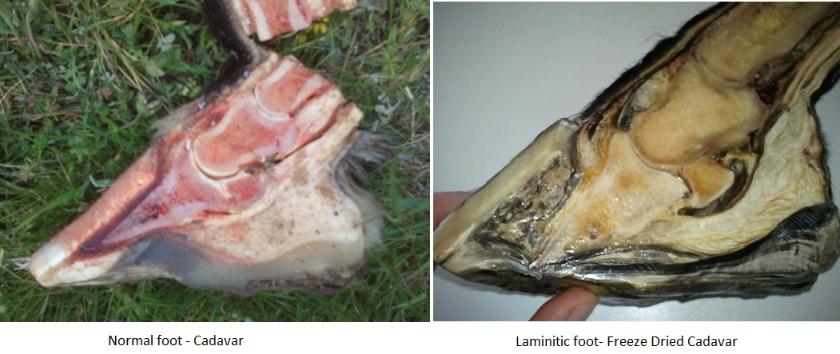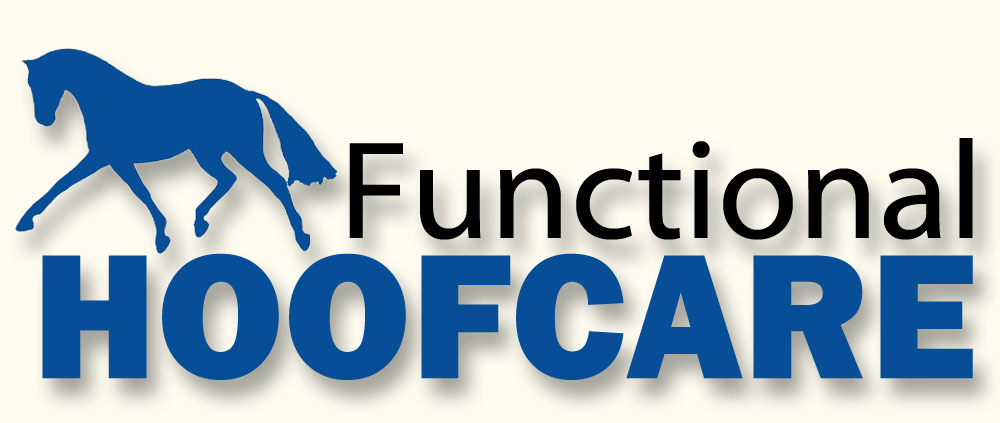The equine hoof
Definition of "Equine Podiotherapy" is:
Maintenance and rehabilitation of the equine foot by the application of physiologically correct trimming practices which respect the role of orthopedics in sustaining lifelong soundness.
This trimming method focuses on not just the distal limb but the horse as a whole, including equine biomechanics. We are aiming for the horse to move correctly and rest comfortably, the hoof remaining functional at all times. The focus is on promoting efficiency, comfort and longevity of the joints, connective tissue, musculo and skeletal systems, encouraging lifelong soundness.
Why we choose "barefoot"- hoof function:
In regards to a correct "barefoot" trim we are looking for a robust, balanced, compact hoof which functions by effectively absorbing the pressures that pass through the distal limb during movement and at rest.
The frog, digital cushion and lateral cartilage within the caudal foot (back) all make up the critical "landing gear" and allow the horse to move comfortably and confidently across the ground.
The digital cushion is made up of thick, supportive tissue however if it is not functioning correctly it will become soft, fatty and lose its ability to support the limb (including the navicular bone) in the foot.
The rounded, angled hoof wall allows for a short break over at the toe and prevents the outer hoof wall from weight bearing. The weight is distributed evenly over the solar surface and some concavity allows for sufficient grip.
When a steel/aluminium/synthetic shoe is nailed to the hoof is considered a "peripheral loading device" which causes problems primarily because it forces the hoof wall to become weight bearing, something it was not designed by nature to do. It also reduces hoof function and prevents the "landing gear" from working effectively, which can be the cause of future pathologies. The frog, digital cushion and lateral cartilage at the back of the foot is not able to engage and support the horse. Over time it becomes soft and pathologies will develop, such as under run heels and caudal foot pain (often referred to as navicular disease or syndrome).
The reason that people are so passionate about barefoot horses is because it is a vital component of having a sound healthy horse long term, into their 20's and 30's plus. We have seen horses come back from having terrible feet, feet that vets and farriers said could not be "fixed", or were temporarily "fixed" only to have the problem return again and often worst than before. It will take dedication,time and effort from you as the owner but it has made a big difference for a lot of horses and will make a big difference for many, many more.




The hoof above is one that I would consider "good" for a domesticated, paddocked and/or stabled horse. The frog is well developed with good cushioning, there is less than 1/3rd of the hoof in front of the tip of the frog which means that this horse has a short breakover (and will move confidently with the back half of the foot well engaged- frog, digital cushion and lateral cartilage all correctly in use). There is a really nice, balanced look to this foot.
Basic Trimming Guide for the Horse Owner
It's possible for the horse owner to help encourage good feet for their own horse/s. If a very basic maintenance trim is done every 7 to 14 days with a rasp we can ensure the hoof is kept in good shape all year round and limit the chance of pathologies. You can make a big difference for your horses' health by spending 15 minutes on their feet each week.
I've developed this guide to help you and your horse, click on the link below to download a PDF guide (3 pages)
Functional Hoofcare: Quick Trim Guide for the Horse Owner
